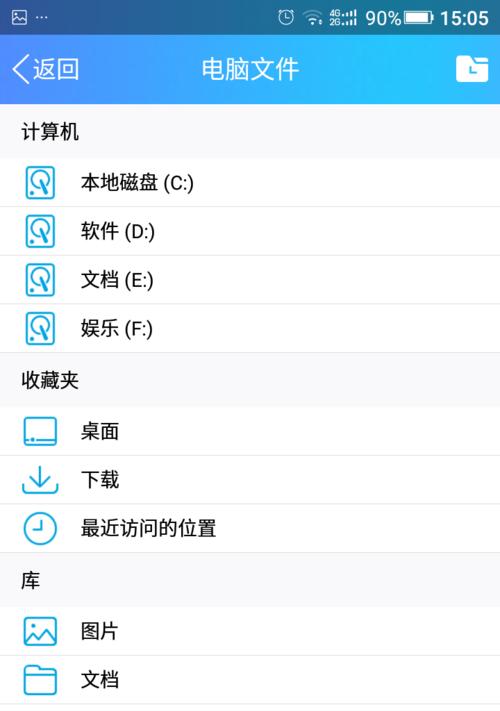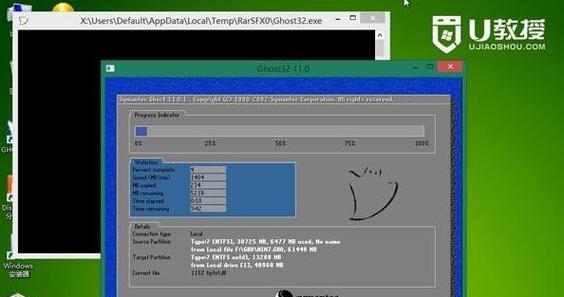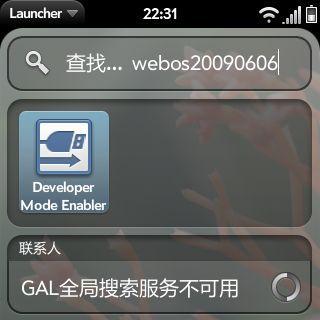 Mobile Tutorial
Mobile Tutorial
 Android Phone
Android Phone
 Tutorial on installing computer system on mobile phone (teaching you step by step to easily install computer system on mobile phone)
Tutorial on installing computer system on mobile phone (teaching you step by step to easily install computer system on mobile phone)
Tutorial on installing computer system on mobile phone (teaching you step by step to easily install computer system on mobile phone)
How to install computer system on mobile phone? With the popularity of mobile phones and the expansion of their functions, people have begun to explore installing computer systems on mobile phones. This will allow users to run PC-specific software and perform PC operations on their phones. In this article, PHP editor Xigua will introduce you in detail how to achieve this goal and help you make full use of the potential of your mobile phone.

Purchase a suitable mobile phone model
So we need to carefully check the specifications and system requirements of the mobile phone, because not all mobile phones can install computer systems. We first need to choose a suitable mobile phone model.
Back up mobile phone data
To prevent data loss during the installation process, we need to back up important data in the mobile phone before starting to install the computer system.

Unlock the phone
To obtain administrator rights and install the computer system, the phone needs to be unlocked. Because the after-sales warranty may be lost after unlocking, this step needs to be performed carefully.
Download and install the flash tool
We need to download the corresponding flash tool, install it according to the phone model, and follow the instructions.
Download the required computer system image file
Select the appropriate computer system image file and download it to your mobile phone according to your needs.

Connect the phone to the computer
Make sure the phone is turned on and connect the phone to the computer through the data cable.
Open the flash tool
and follow the tool prompts. Double-click to open the flash tool and select the flash mode.
Select the computer system image file
and confirm to start flashing, select the previously downloaded computer system image file in the flashing tool.
Waiting for the flashing process to be completed
Please wait patiently until the flashing process is completed. The flashing process will take some time.
Restart the phone
We need to restart the phone to make the newly installed computer system take effect and after the flashing is completed.
Set up a new computer system
We need to perform a series of settings to complete the initialization of the new computer system and boot according to the system.
Install the required software and drivers
In order to use the new computer system normally, according to personal needs, we need to download and install the required software and drivers.
Restore backed up data
to retain the original personal settings and files. After installing the software and driver, we can restore it through the previously backed up data.
Adjust system settings
We can make some adjustments to the new computer system based on personal preferences to obtain a better user experience.
Enjoy the convenience brought by installing the computer system on your mobile phone
Now, you can enjoy the convenience brought by the computer system. You have successfully installed the computer system on your mobile phone!
Flash the phone, install the software and drivers, set up a new system and restore the backup data by selecting the appropriate mobile phone model, adjusting the system settings and other steps. You can also easily install the computer system on the phone and back up the data. Download the flash tool and computer system image file, unlock the phone, connect the phone to the computer, and restart the phone to provide you with more possibilities for work and entertainment. This article details the tutorial for installing the computer system on the phone. To avoid irreversible damage, remember to be careful during operation.
The above is the detailed content of Tutorial on installing computer system on mobile phone (teaching you step by step to easily install computer system on mobile phone). For more information, please follow other related articles on the PHP Chinese website!

Hot AI Tools

Undresser.AI Undress
AI-powered app for creating realistic nude photos

AI Clothes Remover
Online AI tool for removing clothes from photos.

Undress AI Tool
Undress images for free

Clothoff.io
AI clothes remover

Video Face Swap
Swap faces in any video effortlessly with our completely free AI face swap tool!

Hot Article

Hot Tools

Notepad++7.3.1
Easy-to-use and free code editor

SublimeText3 Chinese version
Chinese version, very easy to use

Zend Studio 13.0.1
Powerful PHP integrated development environment

Dreamweaver CS6
Visual web development tools

SublimeText3 Mac version
God-level code editing software (SublimeText3)

Hot Topics
 1653
1653
 14
14
 1413
1413
 52
52
 1306
1306
 25
25
 1251
1251
 29
29
 1224
1224
 24
24
 How to update the image of docker
Apr 15, 2025 pm 12:03 PM
How to update the image of docker
Apr 15, 2025 pm 12:03 PM
The steps to update a Docker image are as follows: Pull the latest image tag New image Delete the old image for a specific tag (optional) Restart the container (if needed)
 Summary of phpmyadmin vulnerabilities
Apr 10, 2025 pm 10:24 PM
Summary of phpmyadmin vulnerabilities
Apr 10, 2025 pm 10:24 PM
The key to PHPMyAdmin security defense strategy is: 1. Use the latest version of PHPMyAdmin and regularly update PHP and MySQL; 2. Strictly control access rights, use .htaccess or web server access control; 3. Enable strong password and two-factor authentication; 4. Back up the database regularly; 5. Carefully check the configuration files to avoid exposing sensitive information; 6. Use Web Application Firewall (WAF); 7. Carry out security audits. These measures can effectively reduce the security risks caused by PHPMyAdmin due to improper configuration, over-old version or environmental security risks, and ensure the security of the database.
 What are the common misunderstandings in CentOS HDFS configuration?
Apr 14, 2025 pm 07:12 PM
What are the common misunderstandings in CentOS HDFS configuration?
Apr 14, 2025 pm 07:12 PM
Common problems and solutions for Hadoop Distributed File System (HDFS) configuration under CentOS When building a HadoopHDFS cluster on CentOS, some common misconfigurations may lead to performance degradation, data loss and even the cluster cannot start. This article summarizes these common problems and their solutions to help you avoid these pitfalls and ensure the stability and efficient operation of your HDFS cluster. Rack-aware configuration error: Problem: Rack-aware information is not configured correctly, resulting in uneven distribution of data block replicas and increasing network load. Solution: Double check the rack-aware configuration in the hdfs-site.xml file and use hdfsdfsadmin-printTopo
 How to create oracle database How to create oracle database
Apr 11, 2025 pm 02:36 PM
How to create oracle database How to create oracle database
Apr 11, 2025 pm 02:36 PM
To create an Oracle database, the common method is to use the dbca graphical tool. The steps are as follows: 1. Use the dbca tool to set the dbName to specify the database name; 2. Set sysPassword and systemPassword to strong passwords; 3. Set characterSet and nationalCharacterSet to AL32UTF8; 4. Set memorySize and tablespaceSize to adjust according to actual needs; 5. Specify the logFile path. Advanced methods are created manually using SQL commands, but are more complex and prone to errors. Pay attention to password strength, character set selection, tablespace size and memory
 What are the oracle11g database migration tools?
Apr 11, 2025 pm 03:36 PM
What are the oracle11g database migration tools?
Apr 11, 2025 pm 03:36 PM
How to choose Oracle 11g migration tool? Determine the migration target and determine the tool requirements. Mainstream tool classification: Oracle's own tools (expdp/impdp) third-party tools (GoldenGate, DataStage) cloud platform services (such as AWS, Azure) to select tools that are suitable for project size and complexity. FAQs and Debugging: Network Problems Permissions Data Consistency Issues Insufficient Space Optimization and Best Practices: Parallel Processing Data Compression Incremental Migration Test
 How to delete all data from oracle
Apr 11, 2025 pm 08:36 PM
How to delete all data from oracle
Apr 11, 2025 pm 08:36 PM
Deleting all data in Oracle requires the following steps: 1. Establish a connection; 2. Disable foreign key constraints; 3. Delete table data; 4. Submit transactions; 5. Enable foreign key constraints (optional). Be sure to back up the database before execution to prevent data loss.
 What types of files are composed of oracle databases?
Apr 11, 2025 pm 03:03 PM
What types of files are composed of oracle databases?
Apr 11, 2025 pm 03:03 PM
Oracle database file structure includes: data file: storing actual data. Control file: Record database structure information. Redo log files: record transaction operations to ensure data consistency. Parameter file: Contains database running parameters to optimize performance. Archive log file: Backup redo log file for disaster recovery.
 What is the impact of Redis persistence on memory?
Apr 10, 2025 pm 02:15 PM
What is the impact of Redis persistence on memory?
Apr 10, 2025 pm 02:15 PM
Redis persistence will take up extra memory, RDB temporarily increases memory usage when generating snapshots, and AOF continues to take up memory when appending logs. Influencing factors include data volume, persistence policy and Redis configuration. To mitigate the impact, you can reasonably configure RDB snapshot policies, optimize AOF configuration, upgrade hardware and monitor memory usage. Furthermore, it is crucial to find a balance between performance and data security.



